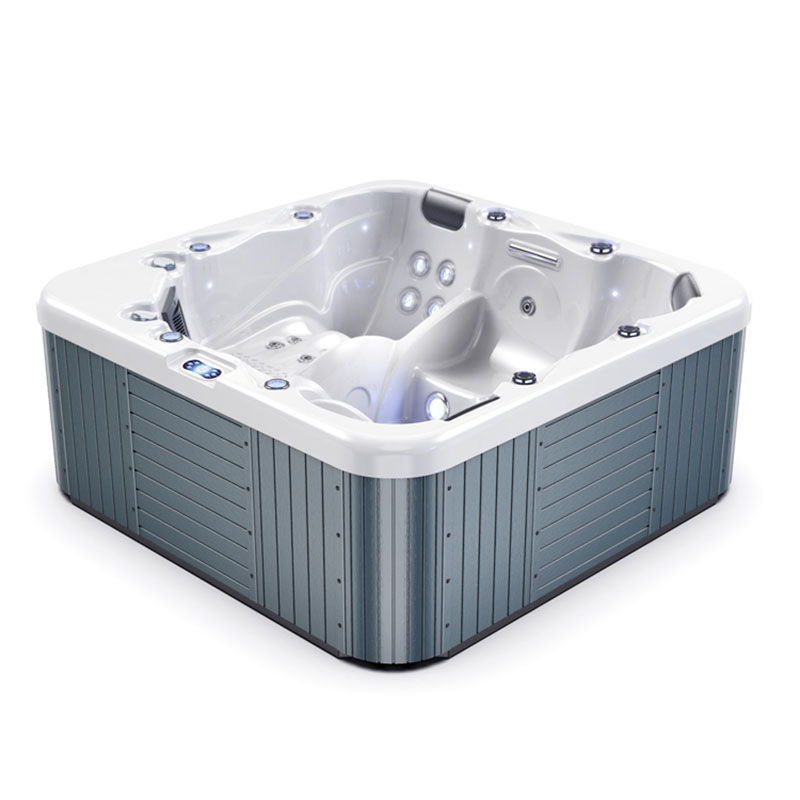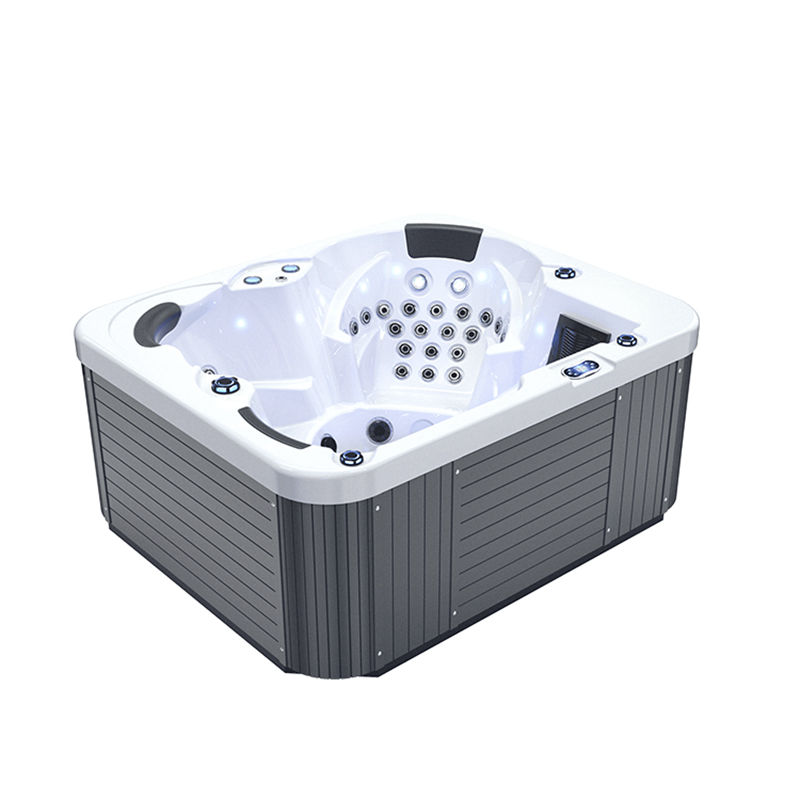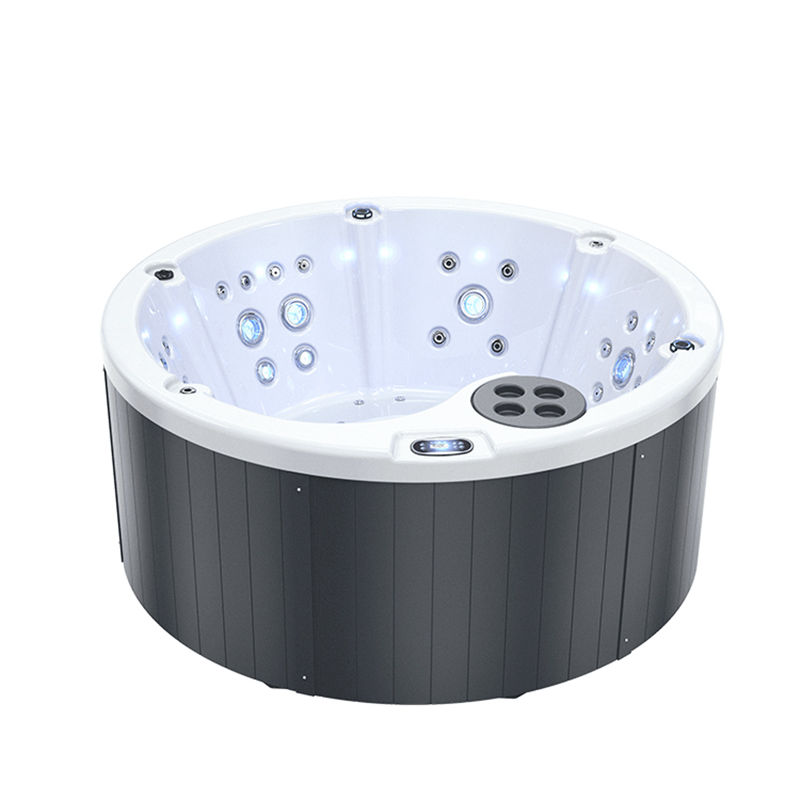Many homes and clubs install outdoor swim spa tubs, hoping to experience the joy of hydrotherapy and swimming at home. However, after long-term use, people often discover an annoying problem: an unpleasant odor in the water or the equipment itself. This odor can be musty, chlorine, fishy, or even sewer-like.
Why does a swim spa, once a symbol of cleanliness and relaxation, develop an unpleasant odor?
There are many reasons. It can stem from water pollution, aging equipment, microbial growth, or improper maintenance. Understanding the source of the odor is the first step to completely eliminating it.
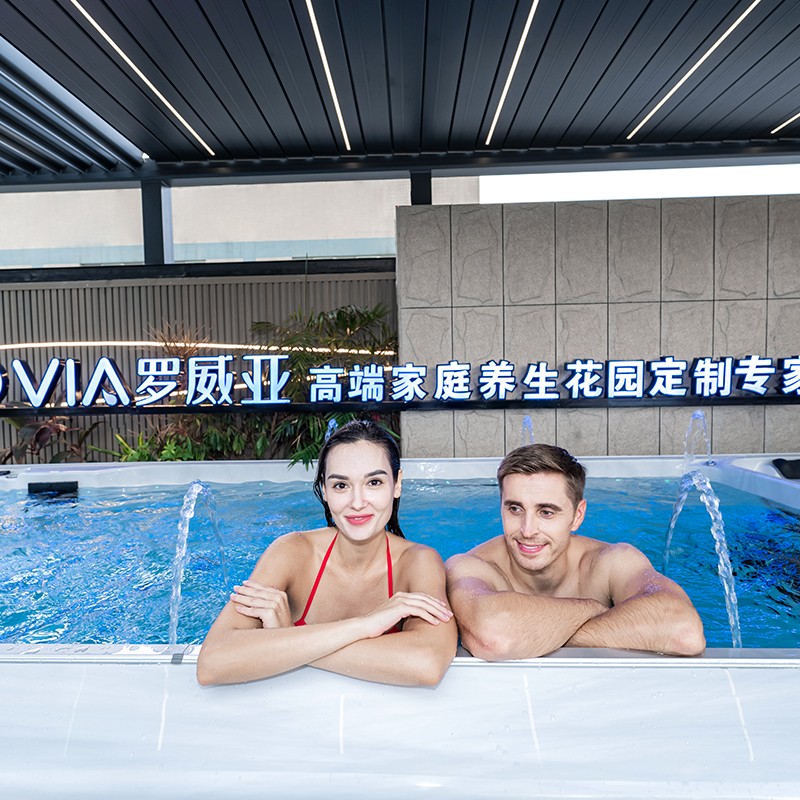
What are the common sources of swim spa tub odors?
Before removing swim spa tub odors, it is important to accurately determine the root cause. Different types of odors require different treatment methods.
1. Odors Caused by Water Pollution
Outdoor swim spa tubs are exposed to the elements and are easily contaminated by dust, pollen, fallen leaves, sweat, and body oils. When these organic compounds break down in the water, they release ammonia or sulfides, creating a pungent odor.
2. Bacterial and Algae Growth
If the filtration system is not maintained promptly or the disinfectant concentration is insufficient, bacteria and algae in the water will rapidly multiply, causing the water to become turbid and develop a "fishy" or "musty" odor.
3. Residue in Filters or Pipes
Dirty particles in the filter, pump tubing, and nozzles are a major source of odor. A filtration system that has not been cleaned for an extended period of time can accumulate gunk, microorganisms, and chemical residue, creating a stale odor.
4. Improper Use of Chemicals
Excessive use of chlorine or ozone disinfectants in a swim spa can also cause a strong chemical odor. Some low-quality detergents or fragrance foams decompose at high temperatures, releasing a pungent odor.
5. Failure to Change the Water
If the circulating water in a swim spa has not been changed for an extended period of time, even if it appears clean, it may accumulate a large amount of dissolved organic matter, creating a breeding ground for bacteria and causing odor.
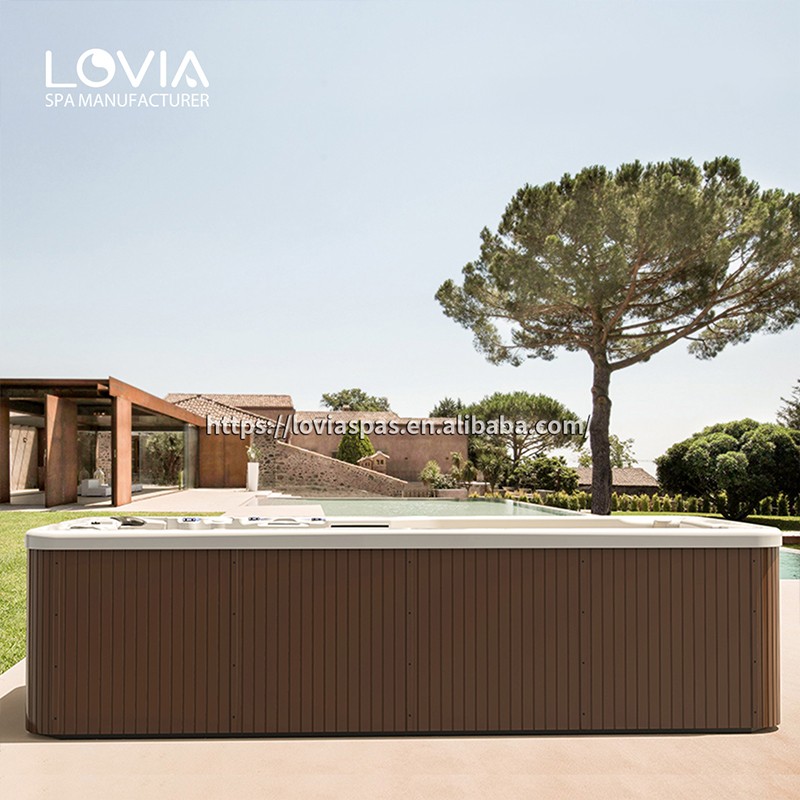
Why does swim spa water smell worse as it becomes clearer?
A common phenomenon is that the water may appear clear on the surface, but it may have an unpleasant odor.
This usually indicates a disruption in the water's chemical balance, particularly imbalances in pH, chlorine concentration, and total dissolved solids (TDS).
1. Chloramine Accumulation Causes Odor
Chlorine itself has no noticeable odor, but when it reacts with ammonia or sweat in the water, it forms chloramines.
Chloramines have a pungent smell and are often mistaken for a "strong disinfectant smell."
2. pH Imbalance
If the pH of a swim spa is too high (>8.0), chlorine's disinfecting ability is reduced, allowing bacteria to thrive, resulting in a fishy odor.
If the pH is too low (<7.0), chemical reactions in the water may intensify, producing a metallic or sour taste.
3. Excessive TDS
Long-term circulation of water increases the levels of dissolved salts, minerals, and organic matter, causing the swim spa water to become turbid and odorous. Therefore, regular testing and adjustment of chemical parameters are key to preventing odors.
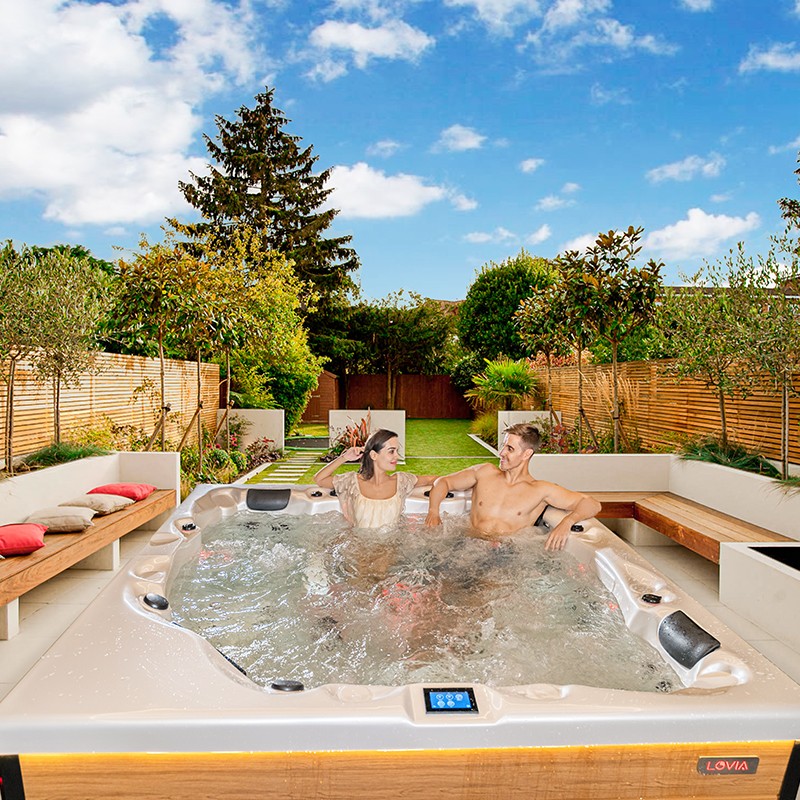
How to scientifically remove odors from a swim spa tub?
To completely eliminate odors, you should focus on four key areas: cleaning, disinfection, water conditioning, and air circulation.
1. Draining and Deep Cleaning: Eliminating Odors at the Source
a. Draining Old Water
• First, drain all the water from the swim spa tub to prevent old water from contaminating the new water.
• Also, check the drainage system for blockages or dirt accumulation.
b. Cleaning the Interior and Showerhead
• Use a non-foaming, neutral detergent to clean the tub's interior, handrails, and jet nozzles.
• Gently brush the showerhead with a toothbrush to remove scale and grease.
c. Cleaning the Filter
• Remove the filter, rinse it with high-pressure water, and soak it in a specialized filter cleaning solution for at least 30 minutes.
• If the filter is noticeably aged, replace it immediately.
d. Clean the pipe system
Use a spa pipe cleaner. After filling the tub, run it in circulation mode for about 15 minutes, then drain thoroughly to remove any internal sediment and biofilm.
2. Refill the tub and adjust the chemistry
a. Use a clean water source
• Refill with clean tap water or filtered water. If your local water is hard, add a water softener to reduce calcium and magnesium ion deposits.
b. Adjust the pH
• The ideal pH is between 7.2 and 7.6.
• Use a pH raiser or lowerer to fine-tune the pH to ensure maximum disinfectant effectiveness.
c. Add disinfectant
• Chlorine-based disinfectants: Maintain a concentration of 1–3 ppm.
• Bromine-based disinfectants: Maintain a concentration of 3–5 ppm.
• Monitor the concentration regularly to avoid overdosing.
d. Add a deodorizer
• Spa deodorizers are commercially available specifically for swim spa tubs. They absorb odor molecules and remove any remaining odors.
3. Enhance Circulation and Ventilation
a. Extend Circulation Time
• Ensure at least 6–8 hours of water circulation daily to ensure even water flow through the filtration system and prevent dead spots.
b. Check the Pump
• A poorly functioning pump can cause stagnant water in areas that can become a source of odor. Regularly clean the pump blades and seals to maintain flow.
c. Increase Air Flow
• Although outdoor swim spa tubs are located outdoors, if they are installed in a semi-enclosed area (such as under a gazebo), they still require air circulation to prevent moisture and chemical odors from accumulating.
4. Use Natural Deodorization Methods
a. Baking Soda (Sodium Bicarbonate)
• Adding an appropriate amount of baking soda (approximately 200 grams per ton of water) to the water can neutralize acidic substances and improve odor.
b. Activated Carbon Filter
• Installing an activated carbon filter in the circulation system effectively absorbs organic odors and chemical residues.
c. Vitamin C Powder
• Vitamin C neutralizes residual chlorine, reducing the pungent chlorine odor.
These methods can help restore fresh water without resorting to harsh chemicals.
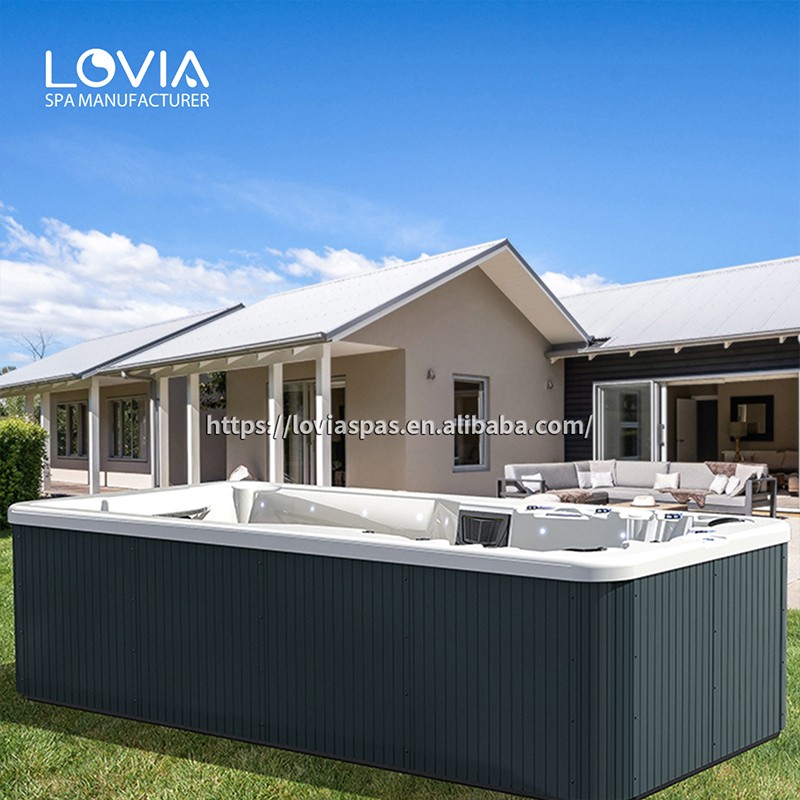
Why does my swim spa still smell after cleaning?
Some people still smell odors after a thorough cleaning. This suggests the problem may not be in the water, but in the tub's structure.
1. Dirt in the drain or downpipe
Organic sediment often remains inside the drainpipe, allowing odors to rise through the airflow even if the tub itself is clean.
Regularly add pipe cleaning solution or flush with hot water.
2. Moldy seals
The rubber seals on the nozzle and filter cap can easily grow mold and produce a musty odor if left damp for a long time.
Remove and air dry the seals or replace them with new ones.
3. Water accumulation in the air jet system
Some swim spas use a bubble jet system. If water accumulates in the pipes and is not drained, the water can decompose and produce an odor.
Run the drain mode regularly or disassemble and inspect the tub.
How can I prevent swim spa odors from recurring?
Removing odors is only a temporary solution; scientific maintenance and prevention strategies are key to long-term freshness.
1. Establish a regular cleaning schedule
• Weekly: Test water quality (pH, residual chlorine);
• Monthly: Clean the filter;
• Quarterly: Drain the tub and clean the pipes;
• Semi-annually: Thoroughly disinfect and inspect equipment for signs of aging.
2. Maintain water balance
• Monitor and record chemical parameters at all times.
• If your swim spa tub is frequently used, consider using an automatic dosing system to ensure stable chemical concentrations.
3. Reduce external contamination
• Use a cover to prevent dust;
• Shower before soaking to remove body oils;
• Avoid using soap or skincare products in the water.
4. Regularly change the circulating water
• No matter how clear the water appears, it is recommended to change the entire water system every 2–3 months.
• Accumulated dissolved matter in old water is a potential source of odor.
5. Keep the equipment dry and well ventilated
• After use, open the drain valve to drain any remaining water and allow the interior to dry thoroughly to prevent mold.
Odor Treatment Table for Different Types
Odor Types | Possible causes | Recommended Solutions |
| Moldy | Mold growth in pipes or seals | Use pipe cleaner to deep clean and dry the seals |
| Excessive chlorine | Chloramine buildup or excessive chlorine | Adjust the pH to 7.4 and reduce chlorine usage |
| Fishy | Bacterial or algae growth | Increase circulation and disinfectant concentration |
| Rottent | Decomposition of organic matter in the water | Drain and replace the water and thoroughly clean |
| Sour or metallic | Low pH or metal corrosion | Adjust the pH and inspect fittings for rust |
By identifying the odor type, you can more effectively and effectively target it.
Can I buy a LOVIA SPA product at a discounted price?
Yes. LOVIA SPA offers promotions, discounts, and low-price options for bulk purchases, wholesale orders, and factory direct sales. Our outdoor spas, swim spas, and hot tubs are high-quality, certified products that can be customized to meet client needs. Buyers can request quotes for single units or large quantities, ensuring competitive pricing and reliable service.
LOVIA SPA’s decades of manufacturing experience, trusted components, and certifications make it a top choice for anyone purchasing spas at a low price without compromising quality or durability.


